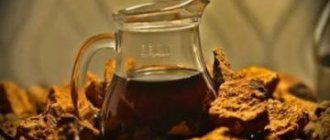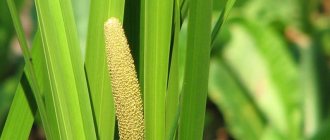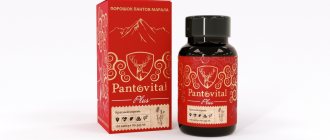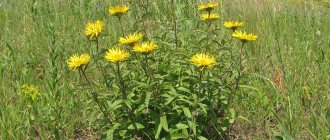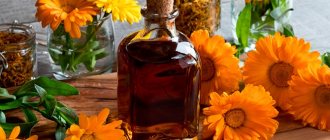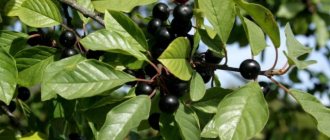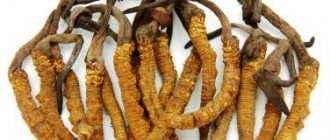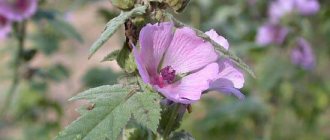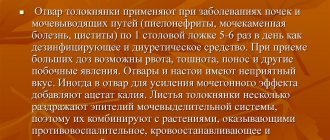Shepherd's purse (field buckwheat, purse) is an annual plant from the Brassica family. It is found everywhere and is probably known to many due to its unusual appearance. Feed crop for rabbits, goats. Is a honey plant.
The plant is completely unpretentious and grows even in places completely unsuitable for this, for example, between stones. Most often found in fields, near roads, in vacant lots and landfills, near houses, in front gardens. It is cosmopolitan and grows in tropical and temperate zones of the globe. In Russia it is distributed everywhere, including Siberia, and does not grow only in the Arctic regions.
The medicinal properties and contraindications of shepherd's purse have been well studied by folk herbalists and pharmacologists, so the plant is actively used for therapeutic purposes and helps with many diseases.
Content of chemical elements
The herb shepherd's purse (purse, quinoa, field buckwheat) contains many useful substances for the human body due to its healing chemical composition.
The active components of the herb are:
- essential oils;
- vitamins A, B and C;
- tannins;
- saponins and carbohydrates;
- choline;
- riboflavin;
- phytoncides;
- bursic acid.
The rich medicinal composition affects all parts of the plant, including the seeds.
Shepherd's purse: what kind of plant is this?
Shepherd's purse or common shepherd's purse is a green herbaceous plant that grows in fields, orchards, vegetable gardens, front gardens, forest plantations, pastures, along ditches and roads in almost all countries of the world with a tropical or temperate climate. It is so unpretentious that it can be found in Siberia. Very often this plant is popularly called “wallet”, “money”, “hearts”, “gritsiki”, “milk plant”, “grandmother”, “heart grass”, “swan”, “spoons”, “henbane”, “tashnik” , “field buckwheat”, “bugs”, “girchak”, “sparrow’s porridge”, etc.
Shepherd's purse is an annual plant that blooms from mid-April to August. It is one of the most common representatives of the Cabbage or Cruciferous family. During the summer months, from 2 to 4 generations of the shepherd's bagworm can grow.
Some scientists argue that the countries of Asia Minor and Southern Europe can be called the homeland of the shepherd’s purse, but there is no clear answer to this question yet. The medicinal weed got its name from its fruits, the appearance of which resembles bags, which were especially popular among shepherds in the 17th and 18th centuries.
In what cases is it indicated?
The plant has a wide range of medicinal properties. Products based on shepherd's purse have a hemostatic, astringent, anti-inflammatory, antimicrobial, hemostatic and vasodilating effect.
External use of medicinal herbs helps relieve inflammation on the skin. Quickly eliminates the consequences of knife wounds and burns.
Healing compositions with shepherd's purse are indicated for use in the following cases:
- Diseases of the urinary system . The herb normalizes the functioning of the urinary tract. Reduces the clinical picture of most kidney pathologies, promotes the removal of stones and relieves pain attacks.
- Problems with the genital area . Treatment is indicated during menopause and premenstrual periods. Herbal compositions help with uterine atony, inflammation of the appendages and heavy menstruation. It is recommended to take tinctures for men diagnosed with prostate adenoma as part of complex therapy.
- Disturbances in the functioning of the digestive system . Inflammatory processes are reduced, scarring of ulcers and erosions is improved. The plant helps stop internal blood loss.
- Respiratory system lesions. Infusions and decoctions prevent the spread of pathogenic microflora in pneumonia and tuberculosis. Recommended for stopping pulmonary hemorrhages.
- Diseases of the musculoskeletal system . The plant reduces inflammation in blood vessels, restores damaged bone tissue, and reduces swelling after sprains and bruises. Recommended in complex therapy for fractures and dislocations.
- Problems with cardiac function . The high content of potassium and flavonoids helps to quickly cure any heart problems.
- Lesions of the hepatobiliary system . Eliminates hepatic colic, improves the functioning of the gallbladder and bile ducts. Therapy is also prescribed to remove stones.
The medicinal herb is indicated for use in the complex treatment of scurvy, malignant tumors, and trophic ulcers.
Indications for use
Shepherd's purse herb has pronounced hemostatic properties. Therefore, it has found application in many areas of medicine: traumatology, gynecology, gastroenterology, etc.
It is noteworthy that bagworm is included in almost all herbal preparations, the purpose of which is to stop bleeding. The herb copes well with inflammation and feverish conditions, and also helps restore mucous membranes and relieve swelling. On the recommendation of your doctor, infusions and decoctions of shepherd's purse can be used for:
- Treatment of diseases of the gastrointestinal tract of various etiologies (dysentery, erosive gastritis, peptic ulcer with a tendency to bleed, inflammatory diseases of the stomach and duodenum).
- Improves appetite, eliminates digestive disorders such as diarrhea and flatulence.
- Normalization of the functioning of the digestive organs.
- Combating insomnia, stress and nervous tension.
- Improving the condition of the cardiovascular system, strengthening the heart muscle, normalizing blood pressure.
- Prevention of varicose veins, rosacea, hemorrhoids.
- Treatment of diseases of the genitourinary system (cystitis, pyelonephritis, enuresis, some STIs).
- Speedy healing of wounds, ulcers and bruises (external use in the form of compresses and lotions).
Effect on the female body
Shepherd's purse (medicinal properties extend to multiple gynecological pathologies) is also called a woman's herb. To eliminate problems with the reproductive system, a wide range of synthetic drugs are produced from plant materials. Ready-made herbal infusions with natural ingredients are especially popular among patients.
Remedies using shepherd's purse herb help relieve the following negative conditions:
- Menstrual irregularities . Decoctions and juice from fresh herbs help normalize menstruation. They help restore the cycle, even if it is disrupted due to hormonal imbalance.
- Menstruation , accompanied by severe pain and heavy bleeding. You can improve your well-being, relieve pain and reduce blood loss by drinking tinctures and tea from the plant.
- Menopausal syndrome . Infusions help improve sleep, relieve irritability and fatigue. Compliance with the course of therapy will help reduce the intensity of hot flashes and low tides.
- Uterine bleeding after childbirth . Decoctions of dried herbs stop uterine bleeding, eliminate inflammation, normalize the contractile properties of the uterus, and strengthen immune functions.
- Inflammation of the appendages and uterus . The anti-inflammatory and antimicrobial effect allows the use of shepherd's purse to stop the pathological process in adnexitis and endometriosis.
For herbal medicinal therapy, you must first consult a doctor.
This is necessary to select the correct dosage and optimal treatment time, as well as to prevent possible side effects.
Contraindications
The use of medicines based on shepherd's purse is contraindicated:
- with blood clotting at a high level;
- if there are problems with the veins, diagnosed thrombophlebitis;
- with complete or partial failure of the thyroid gland;
- children under 12 years of age;
- persons with an allergic reaction to plant components.
The use of the herb during gestation and pregnancy is possible only after consulting a doctor.
Medicinal value
The medicinal properties of shepherd's purse are due to its chemical composition.
- It has long been known that plant preparations increase uterine contractions and help with its atony. The works of A.L. Leibovich confirmed the hemostatic effect of the shepherd's purse infusion for uterine bleeding. Shepherd's purse in gynecology is also prescribed for long and painful menstruation and endometriosis.
- The hemostatic effects of the shepherd's purse were known to the wise healers of Ancient Rome and Greece. In the Middle Ages, in what is now Europe, an infusion of the plant was actively used as a hemostatic agent. Now folk herbalists also recommend the plant for bleeding (pulmonary, intestinal, renal, uterine, hemorrhoidal) and conditions that can lead to internal bleeding (erosive gastritis, diarrhea, peptic ulcer). Gelenic preparations (obtained by extraction) are most helpful, providing a pronounced hemostatic effect, especially with hemorrhages due to insufficient fibrin formation.
- There is experimental information about the hypotensive and diuretic effects of plant preparations, and about its positive effect in the treatment of pulmonary tuberculosis.
- Clinical data have confirmed that the plant has the proper therapeutic effect in the treatment of pyelonephritis (acute and chronic).
- The plant has astringent properties, which are relevant in the treatment of inflammatory diseases of the stomach and duodenum (acute and chronic).
- As an auxiliary therapy, shepherd's purse preparations can be used for diseases of the gallbladder, liver and for the prevention of stone formation.
- Not so long ago, the beneficial effect of the plant on the functioning of the cardiovascular system was discovered. The effects are comparable to the action of mistletoe: it regulates and equalizes the heart rhythm, especially in the elderly, and can be used for high and low blood pressure.
- The leaves are characterized by phytoncidal activity.
- The plant activates intestinal motility.
Negative consequences
Shepherd's purse, the medicinal properties of which often depend on possible harm, may not apply to all diseases.
In addition to these contraindications, the use of the herb is considered hazardous to health when:
- use without consulting a doctor;
- uncontrolled dosages;
- long-term therapy without interruptions;
- not following the correct quantities of ingredients and instructions for preparing products at home.
Possible development of negative conditions and adverse reactions:
- nausea;
- dizziness;
- headache;
- flatulence;
- stomach cramps;
- diarrhea;
- urinary disturbance;
- drowsiness;
- apathy;
- irritability;
- lethargy.
Healing properties
Shepherd's purse is used mainly as an effective means to stop bleeding. It was used in this capacity by the ancient Romans. In subsequent years, there was an active study of culture, which made it possible to expand the scope of its application. Today it has been proven that shepherd's bagworm has the following effects:
- Anti-inflammatory;
- Astringent;
- Diuretic;
- Detoxification;
- Wound healing;
- Vasodilators;
- Antipyretic.
Usage options
There are several known forms of using shepherd's purse in the treatment of diseases. Herbalists recommend drinking such medicines without added sugar. In extreme cases, you can add honey. There are recipes in which honey, on the contrary, serves as the main component. A special feature of the herb is that decoctions and infusions do not need to be kept for a long time.
Infusion
The medicinal herb bagel is also used to prepare a healing infusion. It helps stop negative processes in the genitourinary area. Following the rules of administration will allow you to quickly relieve pain and relieve inflammation. Produces a diuretic effect.
Ingredients:
- shepherd's purse raw materials - 1 tbsp. l;
- water – 300 ml.
Cooking steps:
- Grind the greens by hand or in a blender.
- Pour the raw materials into a thermos with a capacity of no more than 1 liter.
- Pour in hot but not boiling water and leave for 4 hours.
- Strain the mixture through a fine sieve.
You need to divide the amount of the product into 3 equal portions and take it during the day, immediately before meals.
Tea
The drink is useful for weakened immunity. Shepherd's purse tea is indicated for quickly stopping bleeding. Recommended for providing hemostatic and anti-inflammatory effects. Fresh or dried raw materials of leaves and flowers are used.
Compound:
- shepherd's purse - 2 tsp;
- water – 200 ml.
Recipe step by step:
- Scald the teapot with boiling water.
- Pour raw materials into it.
- Pour boiling water over the mixture and cover with a lid.
- Let the tea sit for 30 minutes.
The indicated dosage is a one-time dose and it is advisable to drink it in the morning, on an empty stomach.
Decoction
It is recommended to drink the drink if you have problems with the musculoskeletal system. In the postoperative period, it is prescribed to patients with problems with digestion and kidney function.
Components:
- bagworm herb – 100 g;
- water – 1 l.
Cooking method:
- Place the chopped herbs into the pan.
- Pour boiled water over the raw material.
- Bring the mixture to a boil over low heat.
- Cover with a lid and simmer for another 5 minutes.
- Remove the dishes from the heat and let sit for 30 minutes.
- Filter the composition.
- Store the decoction out of reach of sunlight.
The prepared amount of broth should be drunk in small sips throughout the day. You should not take sedative synthetic medications at this time.
Tincture
The alcohol composition is indicated in the treatment of diseases of the heart and blood vessels. People with hypertension and people diagnosed with heart failure should not take medicine with alcohol.
Ingredients:
- shepherd's purse - 50 g;
- alcohol – 500 ml.
Shepherd's purse has good medicinal properties, which can be beneficially used in the treatment of some serious diseases.
Cooking process:
- Grind the herb in a coffee grinder or pound it in a wooden mortar.
- Pour the raw materials into a glass container.
- Pour in alcohol and shake lightly.
- Seal the container tightly.
- Leave in a dark place for 14 days.
- Filter the composition through a sterile cloth.
The recommended treatment period should not exceed 30 days. Then you must take a break for 20 days and repeat the therapy if necessary. This treatment is contraindicated for people with alcohol and drug addictions.
Description of the shepherd's purse
The common shepherd's purse has an erect or branched single simple stem with a height of 20 to 60 cm. The stem comes in two types: with a short pile in the form of thin hairs in the lower part or completely bare. Near the thin spindle-shaped root there is a rosette of leaves with raised and sharp-toothed edges, which have an elongated shape. Stem leaves with an arrow-shaped base, running alternately up the stem, are smaller in size compared to basal leaves. They are endowed with an oblong-lanceolate shape.
The flowers of the shepherd's purse have the correct shape. Each flower consists of four 35mm petals. The flowers form a white flower cluster located at the crown of the stem. At first the brush resembles an umbrella, but over time it begins to lengthen.
The fruits of the shepherd's bag are pod-shaped and resemble inverted hearts. They consist of 2 veiny and thin boat-shaped valves with a small notch (0.5−0.6 mm) in the upper part of their connection. The average size of one pod is 5 – 8 mm.
The nests, which are located inside the pod, are filled with many small yellow-brown grains, shaped like a flattened oval. The average length of one seed is 1−2.5 mm, and the width is 0.5−0.75 mm. Seeds are available in winter and spring. They germinate twice a year and ripen from May to September.
Shepherd's purse has a high level of productivity. One plant produces from 40 to 70 thousand seeds per year, which can maintain their field germination for 5–6 years.
Recipes for use in the treatment of gynecological pathologies
Shepherd's purse (medicinal properties and indications for use in gynecology apply to almost all diseases) in folk medicine is called a “female” herb. The use of medications in the treatment of diseases of the pelvic organs is possible only after an individual consultation with the attending physician.
The main methods of using the plant in gynecology:
- When endometriosis is diagnosed, the inner uterine layer grows. Without hormonal therapy, and often without surgical intervention, the pathology cannot be eliminated. Douching with a decoction of shepherd's purse can reduce the intake of pills several times. For 20 g of herb, take 200 ml of boiling water, after infusion, filter. You need to douche at least 3 times a day.
- Uterine fibroids are cured by combining douching with a decoction and taking the decoction orally. You need to drink 200 ml of the product 3 times a day. It is better to use the decoction immediately after preparation.
- Uterine bleeding stops if you drink fresh grass juice 3 times a day. For a therapeutic dose, take 20 ml before meals. Continue the course for another 7 days after blood loss has decreased.
- It is recommended to eliminate poor health during menopause through therapy with an infusion of shepherd's purse. It is prepared in a thermos using 400 ml of boiling water and 40 g of dry crushed raw materials.
Experts warn that increasing the concentration or dosage of shepherd's purse products can aggravate poor health and provoke an exacerbation of chronic pathologies.
Brief information about the plant
Shepherd's purse is a weed that has a wide distribution area. It can be found in almost any region, with the exception of the Far North. The prevalence of the plant can be explained by its unpretentiousness and the ripening of a large number of seeds.
In folk medicine and pharmacology, the above-ground parts of the plant are used - leaves, stems and flowers. The presence of browned seeds in the composition of plant raw materials is not expected. Therefore, it is collected during the flowering period, which occurs from May to August.
Preparations containing this plant have a powerful hemostatic effect. At the same time, they improve intestinal motility and reduce blood pressure.
Seeds are used to prepare potions only in one case: if they are still green!
Instructions for pregnant and breastfeeding women
Products based on shepherd's purse help activate the smooth muscles of the uterus. It is on this basis that its use is contraindicated for pregnant women. The use of grass is fraught with the development of an abortifacient effect, that is, a woman may lose her child. Dangerous risks affect all periods of gestation.
In newborns, the grass can cause sleep disturbances, poor urination and digestion.
A high content of phytoncides and essential oils can cause pulmonary edema or impair the functioning of the bronchi. There is a high probability of developing an allergic reaction. If during lactation a woman needs to undergo therapy using a shepherd's purse, it is better to transfer the child to artificial nutrition at this time.
Collection and preparation of grass
Shepherd's purse should be collected during the flowering period. It starts in April and ends in September. The collection process is carried out in dry weather. It is advisable to avoid growing areas located close to highways and industrial facilities. The fact is that the plant can absorb toxic substances from the environment. If there is a white coating on the leaves, there is no need to collect it. It indicates infection with a fungal disease.
During the collection process, it is easy to confuse the shepherd's purse with the field grass. To prevent this from happening, you need to pay attention to the leafy part of the plant. The shepherd's purse resembles dandelion leaves. And the yarutka has more rounded edges. Its seed pods are shaped like an ellipse, while those of the bagworm are heart-shaped.
The stems of the shepherd's purse are cut along with the leaves and flowers. They must be dried immediately after collection. Otherwise, they will quickly change color and become moldy. Drying is done in the shade with good ventilation. It is advisable to spread the leaves and stems on a flat, open space. The attic is perfect for these purposes. In total, drying may take 4-6 days. Dried shepherd's purse should be stored in paper bags or fabric bags. It is important to provide it with protection from direct sunlight and moisture. If storage conditions are met, the shelf life is 2 years.
Attention! If you develop an allergic reaction to shepherd's purse, you should immediately take an antihistamine.
For hypertension
Shepherd's purse is used to lower blood pressure; its medicinal properties help reduce arrhythmia. For hypertension, the use of infusion is indicated.
Ingredients for preparing the medicine:
- raw shepherd's purse - 45 g;
- water – 500 ml.
Recipe:
- The herbal mixture should be poured into a thermos with a glass flask.
- Pour boiling water over the composition and seal tightly, leave for 3 hours.
- Filter the mass through gauze cloth.
An infusion of water helps cleanse blood vessels and relieve signs of hypertension.
Admission rules:
- 100 ml before meals;
- 4 times a day;
- course – 14 days.
Treatment of hair diseases (loss, lack of growth, dandruff)
Shepherd's purse is widely used in cosmetics for household purposes to maintain essential parts. Vitamin-rich broths and microelements slightly alleviate hair problems - stop hair loss, strengthen hair follicles, and stimulate growth.
Another advantage of herbal preparations is their excellent effect on sebum. Regular use of home remedies will quickly and permanently relieve dandruff.
Step by step recipe:
- Mix shepherd's purse, nettle leaves, chamomile flowers, sage (about 10-15 grams in equal parts).
- Cut the plant components, mash the green mass a little with your hands..
- Steam the greens that have released their juice with boiling water (500 ml), leave to brew (20-25 minutes).
The strained liquid is usually used to rinse strands after each shampooing. Perform this function by massaging the hair, allowing the active substances to flow directly into the hair follicles. If the problem is very serious - the hair is actively falling, becoming brittle, dull, it is recommended to add a decoction to the masks used to care for curls.
For liver dysfunction and renal pathologies
The use of shepherd's purse extract helps cleanse the liver and improve the flow of bile. This remedy is indicated for patients with problems with the kidneys and the presence of small stones and sand in them.
Extract composition:
- grass – 10 g;
- vodka or alcohol – 100 ml;
- water – 100 ml.
Cooking instructions:
- The herb needs to be ground into powder, preferably in a coffee grinder.
- Boil water.
- Pour boiling water over the raw materials.
- Cool the mixture to room temperature.
- Mix thoroughly, add vodka, stir again.
- Seal the container with a lid and keep in the refrigerator for 14 days.
- Filter the composition.
The extract should be drunk daily, 15 ml after breakfast. Kidney and liver function will begin to improve within 7 days. For treatment, you need to take the medicine for 60-70 days in a row. If the drug is taken to cleanse the liver of toxins and normalize the functioning of the kidneys, a course of 1 month is sufficient. Before therapy, consultation with a doctor is required.
For enuresis, urinary incontinence
To normalize the functioning of the urinary system, it is recommended to take juice from the fresh herb of the plant. You can collect it all spring and summer, as long as there are no dried parts on the plant.
Rules for making juice from bagwort:
- The grass needs to be scalded with boiling water.
- Finely chop the greens.
- Twist everything through a meat grinder.
- Using sterile gauze, squeeze out the juice.
- Place the juice in a glass container and place in a dark place.
Take 30 drops immediately after meals. For adults, at least 5 times a day, for children it is enough to drink 3 times. To reduce the clinical picture of enuresis in children over 12 years of age and adults, the course of treatment should be at least 45 days.
For children 3-12 years old, signs of urinary incontinence can be eliminated in 25 days. If longer therapy is necessary, doctors advise taking breaks from taking juice every 14 days.
Normalization of blood pressure
Shepherd's purse normalizes blood pressure. In order to stabilize the condition and compensate for the lack of oxygen entering the tissues and blood vessels, a 30-day course of treatment must be carried out. A decoction of a dried plant works best.
Drink composition:
- shepherd's purse - 70 g;
- water – 700 ml.
Cooking features:
- Boil water and set it to cool.
- Grind the dried herb with your hands.
- Fill it with water and place the product in a water bath.
- Simmer the mixture over low heat until the liquid reduces in volume by half.
- Filter the composition.
Divide the resulting mixture into 2 portions. Drink one after breakfast, the second after dinner. There is no need to take the product the next day, only every other day. Thus, the course of therapy will be 1 month, and taking the medicinal drink will be 15 days.
Only in the absence of contraindications does the shepherd's purse have healing properties on the human body. Otherwise, using infusions or decoctions can cause irreparable harm to the body. Therefore, you should not take medications without consulting your doctor first.
Author of the article: Zaturanova E.V.
Article design: Oleg Lozinsky
